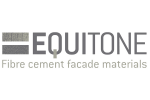Placi de fibrociment EQUITONE - Ghid specificatii EQUITONE [natura] [natura], [natura] PRO
Tip documentatie: Specificații tehnice
Salvează pdf
Full screen
Alte documentatii ale aceleasi game Vezi toate
Catalog, brosura
16 p | RO
[natura] [natura] PRO
Catalog, brosura
20 p | RO
[natura] [natura] PRO

![EQUITONE [natura] - Placi fibrociment rezistente la foc clasificare A2, S1, D0](https://storage.spatiulconstruit.ro/storproc/firma/h5/f5962/gama/10155/foto_gama_din_liste/9957/natura_9957.jpg?width=198&height=158)
![Pagina 1-Placi de fibrociment EQUITONE - Ghid specificatii EQUITONE [natura] [natura], [natura] PRO...](https://storage.spatiulconstruit.ro/storproc/firma/h5/f5962/gama/10155/documentatie_gama/75443/pagina_documentatie_gama/597765/equitone_documentatie_gama75443placi_de_fibrociment_equitone_ghid_specificatii_page_1_597765/920.jpg?width=920)
![Pagina 2-Placi de fibrociment EQUITONE - Ghid specificatii EQUITONE [natura] [natura], [natura] PRO...](https://storage.spatiulconstruit.ro/storproc/firma/h5/f5962/gama/10155/documentatie_gama/75443/pagina_documentatie_gama/597766/equitone_documentatie_gama75443placi_de_fibrociment_equitone_ghid_specificatii_page_2_597766/920.jpg?width=920)
![Pagina 3-Placi de fibrociment EQUITONE - Ghid specificatii EQUITONE [natura] [natura], [natura] PRO...](https://storage.spatiulconstruit.ro/storproc/firma/h5/f5962/gama/10155/documentatie_gama/75443/pagina_documentatie_gama/597767/equitone_documentatie_gama75443placi_de_fibrociment_equitone_ghid_specificatii_page_3_597767/920.jpg?width=920)
![Pagina 4-Placi de fibrociment EQUITONE - Ghid specificatii EQUITONE [natura] [natura], [natura] PRO...](https://storage.spatiulconstruit.ro/storproc/firma/h5/f5962/gama/10155/documentatie_gama/75443/pagina_documentatie_gama/597768/equitone_documentatie_gama75443placi_de_fibrociment_equitone_ghid_specificatii_page_4_597768/920.jpg?width=920)
![Pagina 5-Placi de fibrociment EQUITONE - Ghid specificatii EQUITONE [natura] [natura], [natura] PRO...](https://storage.spatiulconstruit.ro/storproc/firma/h5/f5962/gama/10155/documentatie_gama/75443/pagina_documentatie_gama/597769/equitone_documentatie_gama75443placi_de_fibrociment_equitone_ghid_specificatii_page_5_597769/920.jpg?width=920)
![Pagina 6-Placi de fibrociment EQUITONE - Ghid specificatii EQUITONE [natura] [natura], [natura] PRO...](https://storage.spatiulconstruit.ro/storproc/firma/h5/f5962/gama/10155/documentatie_gama/75443/pagina_documentatie_gama/597770/equitone_documentatie_gama75443placi_de_fibrociment_equitone_ghid_specificatii_page_6_597770/920.jpg?width=920)
![Pagina 7-Placi de fibrociment EQUITONE - Ghid specificatii EQUITONE [natura] [natura], [natura] PRO...](https://storage.spatiulconstruit.ro/storproc/firma/h5/f5962/gama/10155/documentatie_gama/75443/pagina_documentatie_gama/597771/equitone_documentatie_gama75443placi_de_fibrociment_equitone_ghid_specificatii_page_7_597771/920.jpg?width=920)
![Pagina 8-Placi de fibrociment EQUITONE - Ghid specificatii EQUITONE [natura] [natura], [natura] PRO...](https://storage.spatiulconstruit.ro/storproc/firma/h5/f5962/gama/10155/documentatie_gama/75443/pagina_documentatie_gama/597772/equitone_documentatie_gama75443placi_de_fibrociment_equitone_ghid_specificatii_page_8_597772/920.jpg?width=920)
![Pagina 9-Placi de fibrociment EQUITONE - Ghid specificatii EQUITONE [natura] [natura], [natura] PRO...](https://storage.spatiulconstruit.ro/storproc/firma/h5/f5962/gama/10155/documentatie_gama/75443/pagina_documentatie_gama/597773/equitone_documentatie_gama75443placi_de_fibrociment_equitone_ghid_specificatii_page_9_597773/920.jpg?width=920)
![Pagina 10-Placi de fibrociment EQUITONE - Ghid specificatii EQUITONE [natura] [natura], [natura] PRO...](https://storage.spatiulconstruit.ro/storproc/firma/h5/f5962/gama/10155/documentatie_gama/75443/pagina_documentatie_gama/597774/equitone_documentatie_gama75443placi_de_fibrociment_equitone_ghid_specificatii_page_10_597774/920.jpg?width=920)
![Pagina 11-Placi de fibrociment EQUITONE - Ghid specificatii EQUITONE [natura] [natura], [natura] PRO...](https://storage.spatiulconstruit.ro/storproc/firma/h5/f5962/gama/10155/documentatie_gama/75443/pagina_documentatie_gama/597775/equitone_documentatie_gama75443placi_de_fibrociment_equitone_ghid_specificatii_page_11_597775/920.jpg?width=920)
![Pagina 12-Placi de fibrociment EQUITONE - Ghid specificatii EQUITONE [natura] [natura], [natura] PRO...](https://storage.spatiulconstruit.ro/storproc/firma/h5/f5962/gama/10155/documentatie_gama/75443/pagina_documentatie_gama/597776/equitone_documentatie_gama75443placi_de_fibrociment_equitone_ghid_specificatii_page_12_597776/920.jpg?width=920)
![Pagina 13-Placi de fibrociment EQUITONE - Ghid specificatii EQUITONE [natura] [natura], [natura] PRO...](https://storage.spatiulconstruit.ro/storproc/firma/h5/f5962/gama/10155/documentatie_gama/75443/pagina_documentatie_gama/597777/equitone_documentatie_gama75443placi_de_fibrociment_equitone_ghid_specificatii_page_13_597777/920.jpg?width=920)
![Pagina 14-Placi de fibrociment EQUITONE - Ghid specificatii EQUITONE [natura] [natura], [natura] PRO...](https://storage.spatiulconstruit.ro/storproc/firma/h5/f5962/gama/10155/documentatie_gama/75443/pagina_documentatie_gama/597778/equitone_documentatie_gama75443placi_de_fibrociment_equitone_ghid_specificatii_page_14_597778/920.jpg?width=920)
![Pagina 15-Placi de fibrociment EQUITONE - Ghid specificatii EQUITONE [natura] [natura], [natura] PRO...](https://storage.spatiulconstruit.ro/storproc/firma/h5/f5962/gama/10155/documentatie_gama/75443/pagina_documentatie_gama/597779/equitone_documentatie_gama75443placi_de_fibrociment_equitone_ghid_specificatii_page_15_597779/920.jpg?width=920)
![Pagina 16-Placi de fibrociment EQUITONE - Ghid specificatii EQUITONE [natura] [natura], [natura] PRO...](https://storage.spatiulconstruit.ro/storproc/firma/h5/f5962/gama/10155/documentatie_gama/75443/pagina_documentatie_gama/597780/equitone_documentatie_gama75443placi_de_fibrociment_equitone_ghid_specificatii_page_16_597780/920.jpg?width=920)
![Pagina 17-Placi de fibrociment EQUITONE - Ghid specificatii EQUITONE [natura] [natura], [natura] PRO...](https://storage.spatiulconstruit.ro/storproc/firma/h5/f5962/gama/10155/documentatie_gama/75443/pagina_documentatie_gama/597781/equitone_documentatie_gama75443placi_de_fibrociment_equitone_ghid_specificatii_page_17_597781/920.jpg?width=920)
![Pagina 18-Placi de fibrociment EQUITONE - Ghid specificatii EQUITONE [natura] [natura], [natura] PRO...](https://storage.spatiulconstruit.ro/storproc/firma/h5/f5962/gama/10155/documentatie_gama/75443/pagina_documentatie_gama/597782/equitone_documentatie_gama75443placi_de_fibrociment_equitone_ghid_specificatii_page_18_597782/920.jpg?width=920)
![Pagina 19-Placi de fibrociment EQUITONE - Ghid specificatii EQUITONE [natura] [natura], [natura] PRO...](https://storage.spatiulconstruit.ro/storproc/firma/h5/f5962/gama/10155/documentatie_gama/75443/pagina_documentatie_gama/597783/equitone_documentatie_gama75443placi_de_fibrociment_equitone_ghid_specificatii_page_19_597783/920.jpg?width=920)
![Pagina 20-Placi de fibrociment EQUITONE - Ghid specificatii EQUITONE [natura] [natura], [natura] PRO...](https://storage.spatiulconstruit.ro/storproc/firma/h5/f5962/gama/10155/documentatie_gama/75443/pagina_documentatie_gama/597784/equitone_documentatie_gama75443placi_de_fibrociment_equitone_ghid_specificatii_page_20_597784/920.jpg?width=920)
![Pagina 21-Placi de fibrociment EQUITONE - Ghid specificatii EQUITONE [natura] [natura], [natura] PRO...](https://storage.spatiulconstruit.ro/storproc/firma/h5/f5962/gama/10155/documentatie_gama/75443/pagina_documentatie_gama/597785/equitone_documentatie_gama75443placi_de_fibrociment_equitone_ghid_specificatii_page_21_597785/920.jpg?width=920)
![Pagina 22-Placi de fibrociment EQUITONE - Ghid specificatii EQUITONE [natura] [natura], [natura] PRO...](https://storage.spatiulconstruit.ro/storproc/firma/h5/f5962/gama/10155/documentatie_gama/75443/pagina_documentatie_gama/597786/equitone_documentatie_gama75443placi_de_fibrociment_equitone_ghid_specificatii_page_22_597786/920.jpg?width=920)
![Pagina 23-Placi de fibrociment EQUITONE - Ghid specificatii EQUITONE [natura] [natura], [natura] PRO...](https://storage.spatiulconstruit.ro/storproc/firma/h5/f5962/gama/10155/documentatie_gama/75443/pagina_documentatie_gama/597787/equitone_documentatie_gama75443placi_de_fibrociment_equitone_ghid_specificatii_page_23_597787/920.jpg?width=920)
![Pagina 24-Placi de fibrociment EQUITONE - Ghid specificatii EQUITONE [natura] [natura], [natura] PRO...](https://storage.spatiulconstruit.ro/storproc/firma/h5/f5962/gama/10155/documentatie_gama/75443/pagina_documentatie_gama/597788/equitone_documentatie_gama75443placi_de_fibrociment_equitone_ghid_specificatii_page_24_597788/920.jpg?width=920)
![Pagina 25-Placi de fibrociment EQUITONE - Ghid specificatii EQUITONE [natura] [natura], [natura] PRO...](https://storage.spatiulconstruit.ro/storproc/firma/h5/f5962/gama/10155/documentatie_gama/75443/pagina_documentatie_gama/597789/equitone_documentatie_gama75443placi_de_fibrociment_equitone_ghid_specificatii_page_25_597789/920.jpg?width=920)
![Pagina 26-Placi de fibrociment EQUITONE - Ghid specificatii EQUITONE [natura] [natura], [natura] PRO...](https://storage.spatiulconstruit.ro/storproc/firma/h5/f5962/gama/10155/documentatie_gama/75443/pagina_documentatie_gama/597790/equitone_documentatie_gama75443placi_de_fibrociment_equitone_ghid_specificatii_page_26_597790/920.jpg?width=920)
![Pagina 27-Placi de fibrociment EQUITONE - Ghid specificatii EQUITONE [natura] [natura], [natura] PRO...](https://storage.spatiulconstruit.ro/storproc/firma/h5/f5962/gama/10155/documentatie_gama/75443/pagina_documentatie_gama/597791/equitone_documentatie_gama75443placi_de_fibrociment_equitone_ghid_specificatii_page_27_597791/920.jpg?width=920)
![Pagina 28-Placi de fibrociment EQUITONE - Ghid specificatii EQUITONE [natura] [natura], [natura] PRO...](https://storage.spatiulconstruit.ro/storproc/firma/h5/f5962/gama/10155/documentatie_gama/75443/pagina_documentatie_gama/597792/equitone_documentatie_gama75443placi_de_fibrociment_equitone_ghid_specificatii_page_28_597792/920.jpg?width=920)
![Pagina 29-Placi de fibrociment EQUITONE - Ghid specificatii EQUITONE [natura] [natura], [natura] PRO...](https://storage.spatiulconstruit.ro/storproc/firma/h5/f5962/gama/10155/documentatie_gama/75443/pagina_documentatie_gama/597793/equitone_documentatie_gama75443placi_de_fibrociment_equitone_ghid_specificatii_page_29_597793/920.jpg?width=920)
![Pagina 30-Placi de fibrociment EQUITONE - Ghid specificatii EQUITONE [natura] [natura], [natura] PRO...](https://storage.spatiulconstruit.ro/storproc/firma/h5/f5962/gama/10155/documentatie_gama/75443/pagina_documentatie_gama/597794/equitone_documentatie_gama75443placi_de_fibrociment_equitone_ghid_specificatii_page_30_597794/920.jpg?width=920)
![Pagina 31-Placi de fibrociment EQUITONE - Ghid specificatii EQUITONE [natura] [natura], [natura] PRO...](https://storage.spatiulconstruit.ro/storproc/firma/h5/f5962/gama/10155/documentatie_gama/75443/pagina_documentatie_gama/597795/equitone_documentatie_gama75443placi_de_fibrociment_equitone_ghid_specificatii_page_31_597795/920.jpg?width=920)
![Pagina 32-Placi de fibrociment EQUITONE - Ghid specificatii EQUITONE [natura] [natura], [natura] PRO...](https://storage.spatiulconstruit.ro/storproc/firma/h5/f5962/gama/10155/documentatie_gama/75443/pagina_documentatie_gama/597796/equitone_documentatie_gama75443placi_de_fibrociment_equitone_ghid_specificatii_page_32_597796/920.jpg?width=920)
![Pagina 33-Placi de fibrociment EQUITONE - Ghid specificatii EQUITONE [natura] [natura], [natura] PRO...](https://storage.spatiulconstruit.ro/storproc/firma/h5/f5962/gama/10155/documentatie_gama/75443/pagina_documentatie_gama/597797/equitone_documentatie_gama75443placi_de_fibrociment_equitone_ghid_specificatii_page_33_597797/920.jpg?width=920)
![Pagina 34-Placi de fibrociment EQUITONE - Ghid specificatii EQUITONE [natura] [natura], [natura] PRO...](https://storage.spatiulconstruit.ro/storproc/firma/h5/f5962/gama/10155/documentatie_gama/75443/pagina_documentatie_gama/597798/equitone_documentatie_gama75443placi_de_fibrociment_equitone_ghid_specificatii_page_34_597798/920.jpg?width=920)
![Pagina 35-Placi de fibrociment EQUITONE - Ghid specificatii EQUITONE [natura] [natura], [natura] PRO...](https://storage.spatiulconstruit.ro/storproc/firma/h5/f5962/gama/10155/documentatie_gama/75443/pagina_documentatie_gama/597799/equitone_documentatie_gama75443placi_de_fibrociment_equitone_ghid_specificatii_page_35_597799/920.jpg?width=920)
![Pagina 36-Placi de fibrociment EQUITONE - Ghid specificatii EQUITONE [natura] [natura], [natura] PRO...](https://storage.spatiulconstruit.ro/storproc/firma/h5/f5962/gama/10155/documentatie_gama/75443/pagina_documentatie_gama/597800/equitone_documentatie_gama75443placi_de_fibrociment_equitone_ghid_specificatii_page_36_597800/920.jpg?width=920)
![Pagina 37-Placi de fibrociment EQUITONE - Ghid specificatii EQUITONE [natura] [natura], [natura] PRO...](https://storage.spatiulconstruit.ro/storproc/firma/h5/f5962/gama/10155/documentatie_gama/75443/pagina_documentatie_gama/597801/equitone_documentatie_gama75443placi_de_fibrociment_equitone_ghid_specificatii_page_37_597801/920.jpg?width=920)
![Pagina 38-Placi de fibrociment EQUITONE - Ghid specificatii EQUITONE [natura] [natura], [natura] PRO...](https://storage.spatiulconstruit.ro/storproc/firma/h5/f5962/gama/10155/documentatie_gama/75443/pagina_documentatie_gama/597802/equitone_documentatie_gama75443placi_de_fibrociment_equitone_ghid_specificatii_page_38_597802/920.jpg?width=920)
![Pagina 39-Placi de fibrociment EQUITONE - Ghid specificatii EQUITONE [natura] [natura], [natura] PRO...](https://storage.spatiulconstruit.ro/storproc/firma/h5/f5962/gama/10155/documentatie_gama/75443/pagina_documentatie_gama/597803/equitone_documentatie_gama75443placi_de_fibrociment_equitone_ghid_specificatii_page_39_597803/920.jpg?width=920)
![Pagina 40-Placi de fibrociment EQUITONE - Ghid specificatii EQUITONE [natura] [natura], [natura] PRO...](https://storage.spatiulconstruit.ro/storproc/firma/h5/f5962/gama/10155/documentatie_gama/75443/pagina_documentatie_gama/597804/equitone_documentatie_gama75443placi_de_fibrociment_equitone_ghid_specificatii_page_40_597804/920.jpg?width=920)
![Pagina 41-Placi de fibrociment EQUITONE - Ghid specificatii EQUITONE [natura] [natura], [natura] PRO...](https://storage.spatiulconstruit.ro/storproc/firma/h5/f5962/gama/10155/documentatie_gama/75443/pagina_documentatie_gama/597805/equitone_documentatie_gama75443placi_de_fibrociment_equitone_ghid_specificatii_page_41_597805/920.jpg?width=920)
![Pagina 42-Placi de fibrociment EQUITONE - Ghid specificatii EQUITONE [natura] [natura], [natura] PRO...](https://storage.spatiulconstruit.ro/storproc/firma/h5/f5962/gama/10155/documentatie_gama/75443/pagina_documentatie_gama/597806/equitone_documentatie_gama75443placi_de_fibrociment_equitone_ghid_specificatii_page_42_597806/920.jpg?width=920)

